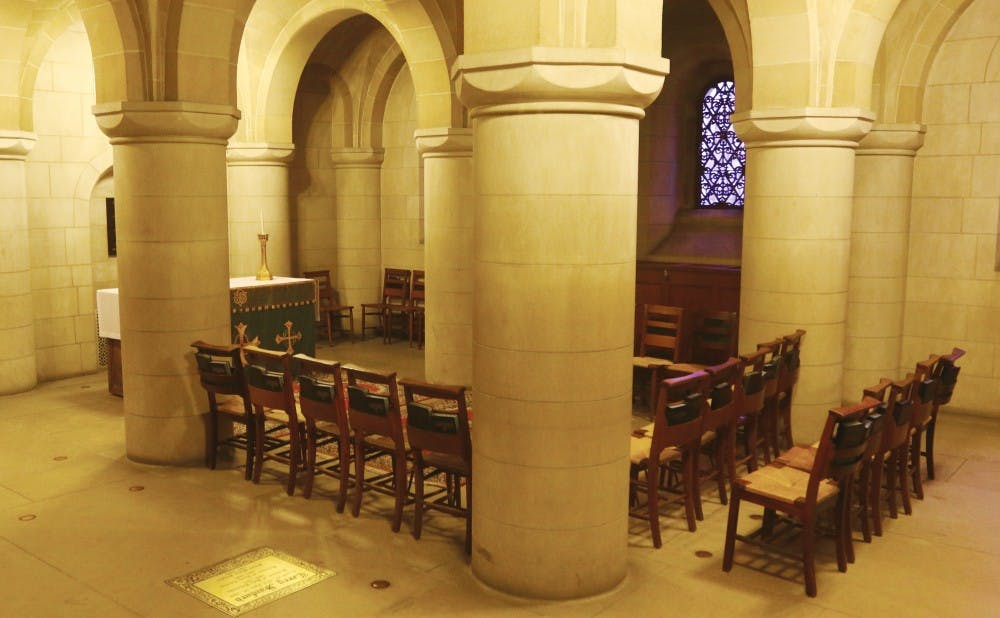The word ‘crypt’ typically has a rather eerie connotation, conjuring images of abandoned underground chambers and unnerving darkness—but the crypt of the Duke Chapel does not fit such a ghostly image.
The crypt’s entrance fits the ghoulish bill, with a wooden door at the back of the Chapel opening to a steep stone staircase. At the bottom of the stairs, however, is something entirely different. Instead of shadowy corridors and cobweb-covered corners, the Chapel crypt is well-lit and open to the public. This allows for something slightly macabre in its own right, however—the same space that houses the bodies of University visionaries is also the location for what was once a Sunday school classroom and a space once used for religious services.
Until Chapel staff discovered that it is considered a fire hazard for the crypt to host large groups of people because there are not enough exits, the space was utilized in a number of ways, said Daniel Reeves, the visitor relations specialist at the Chapel. In addition to its function as a Sunday school classroom, it also was used as a location for the Duke Catholic Center’s services and as the home of an art exhibit, according to the University archives.
The portion of the crypt that once was a classroom is roped off, and the Sunday school supplies remain in the crypt even though they are no longer used. Children’s books and toys are strewn atop the burial spaces.
Although the crypt is not frequented by children anymore, Duke students occasionally take advantage of the calm it provides, Reeves noted.
“Sometimes people will do homework down there,” he said. “It’s always quiet.”
The crypt is the final resting place of former University Presidents William Preston Few, J. Deryl Hart and Terry Sanford. Mary Johnson Hart—wife of J. Deryl—and Margaret Rose Sanford—wife of Terry—are also buried in the crypt, as is Nanaline Holt Duke, the wife of James B. Duke.
All are buried beneath the floor of the crypt, with plaques marking their coffins. Space remains for a number of other people to be buried in the crypt in years to come, with burial being authorized by the Board of Trustees.
In the walls of the crypt are the ashes of James A. Thomas, former chairman of the Duke Memorial Association, and of James T. Cleland, former Dean of the Chapel, and his wife, Alice.
The crypt does not employ the Gothic style of the rest of the Chapel, but instead is designed in a Romanesque format, with rounded arches. It was not in the original blueprints for the Chapel but was added before construction began as a way to honor the Duke family, according to the University archives. The sarcophagi of James B. Duke, Benjamin Newton Duke and Washington Duke are located above the crypt, in the Memorial Chapel.
But even with the bright lighting, the easy access and the leftover toys, the crypt still strikes some as spooky, Reeves said.
“High school and middle school students who come in on tours can get pretty freaked out, thinking about walking around on top of bodies,” he noted.
Get The Chronicle straight to your inbox
Signup for our weekly newsletter. Cancel at any time.

